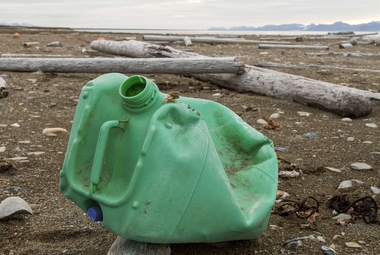Zack Fishman
Reporter, Life Sciences and Physical Sciences
@ZBFishmanZack Fishman, based in Chicago, covers Life Sciences and Physical Sciences for The Academic Times. Previously, Zack received his M.S. in journalism at Northwestern University, specializing in health, environment and science reporting, and his B.S. in engineering physics at the University of Illinois at Urbana-Champaign.
All of the world's cities with more than 1 million people are consuming much more oxygen than they produce — hundreds or thousands times more in some cases — and may soon be at risk of exposing their inhabitants to harmful low-oxygen levels in very calm weather, according to new scientific modeling.
 The nearby blue-white star Altair is surrounded by an ultraviolet-emitting layer known as a chromosphere, according to first-of-their-kind radio-wave observations. The feature, unusual for large and hot stars such as Altair, is likely generated because the star rotates more than 100 times faster than the sun does.
The nearby blue-white star Altair is surrounded by an ultraviolet-emitting layer known as a chromosphere, according to first-of-their-kind radio-wave observations. The feature, unusual for large and hot stars such as Altair, is likely generated because the star rotates more than 100 times faster than the sun does. A team of U.K. researchers has become the second group to declare that a potentially revolutionary behavior of superconducting materials found in earlier research was simply a case of leaking electrons, but the discoverers of the phenomenon insist the new research fails to explain away their findings.
A team of U.K. researchers has become the second group to declare that a potentially revolutionary behavior of superconducting materials found in earlier research was simply a case of leaking electrons, but the discoverers of the phenomenon insist the new research fails to explain away their findings. Dusts of heavy metals fall to Earth's surface as the solar system drifts through pockets of the material, which were produced by supernovas more than 10 million years ago. An analysis of those metals suggest that other extreme celestial events also produced heavy elements, possibly changing the story of the solar system's origins.
Dusts of heavy metals fall to Earth's surface as the solar system drifts through pockets of the material, which were produced by supernovas more than 10 million years ago. An analysis of those metals suggest that other extreme celestial events also produced heavy elements, possibly changing the story of the solar system's origins. A large collaboration of scientists has sequenced and identified more than 98% of the genes in a bonobo, one of humans' closest evolutionary cousins, revealing surprising speed and complexity in the evolution of genes within the great-ape family and marking a significant improvement from earlier sequencing.
With more energy-efficient methods for production and use, Brazil's cement industry can more than halve its carbon dioxide emissions in the next 30 years while saving nearly $700 million, according to a new analysis — and the reductions could be much deeper, when accounting for cement products' absorption of carbon dioxide from the air.

